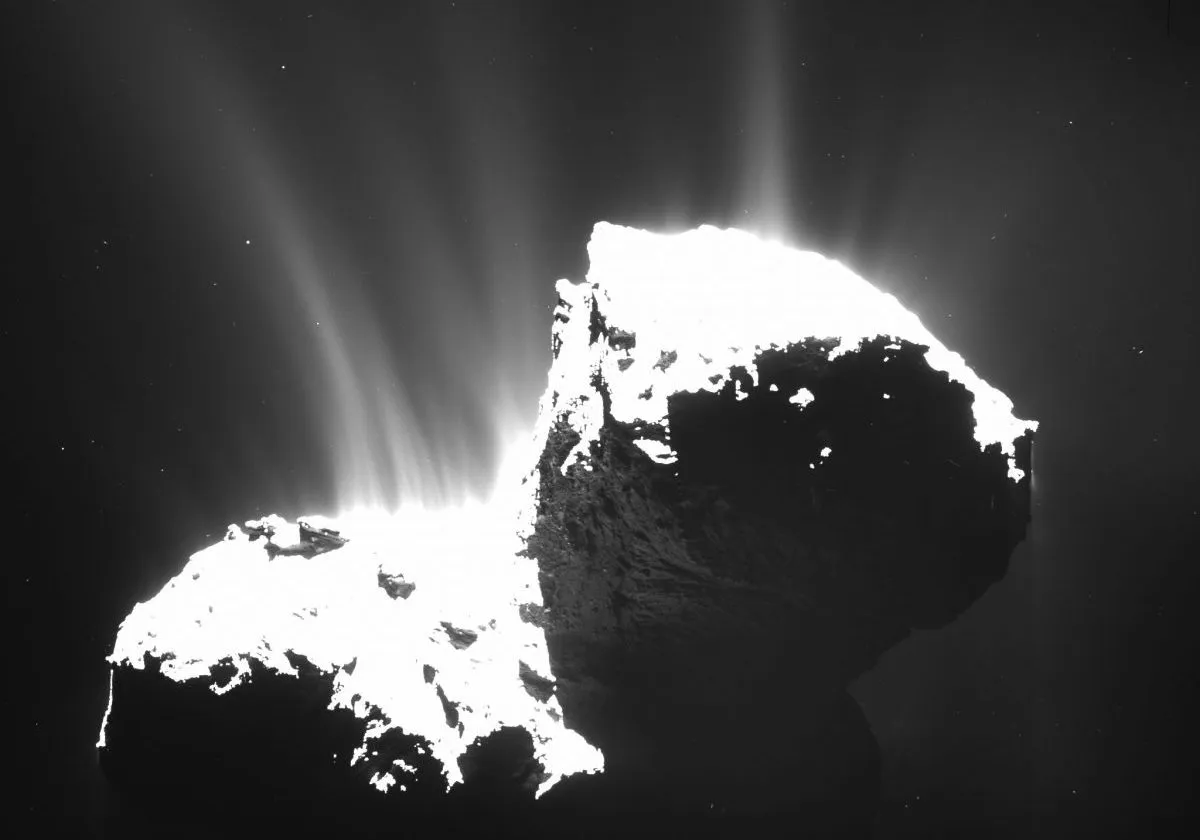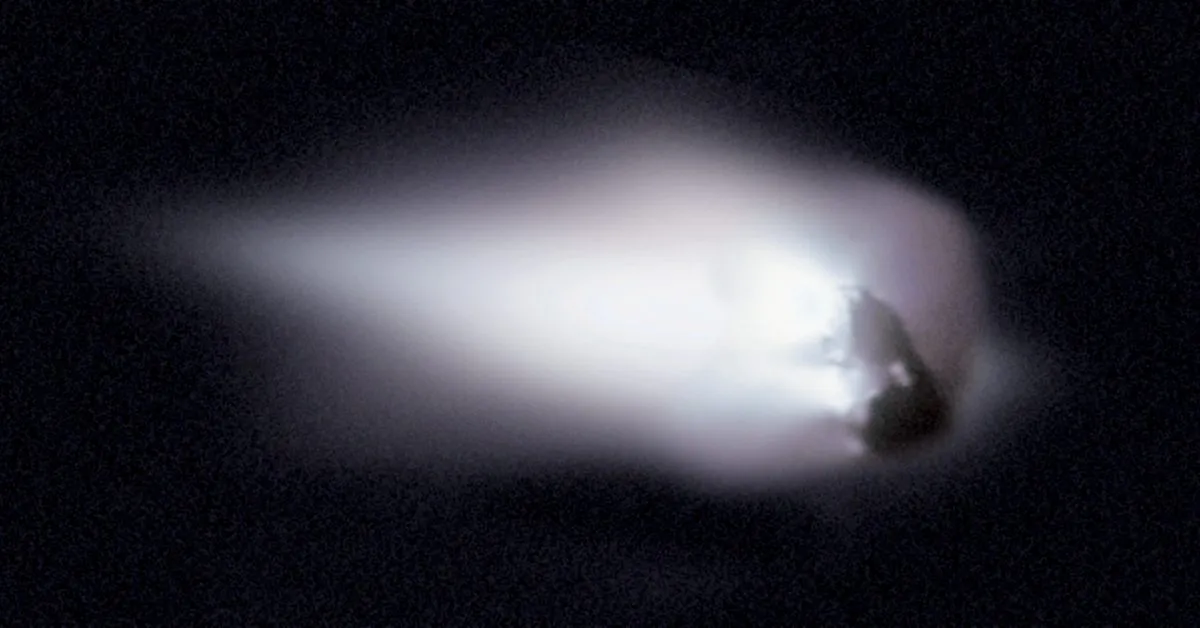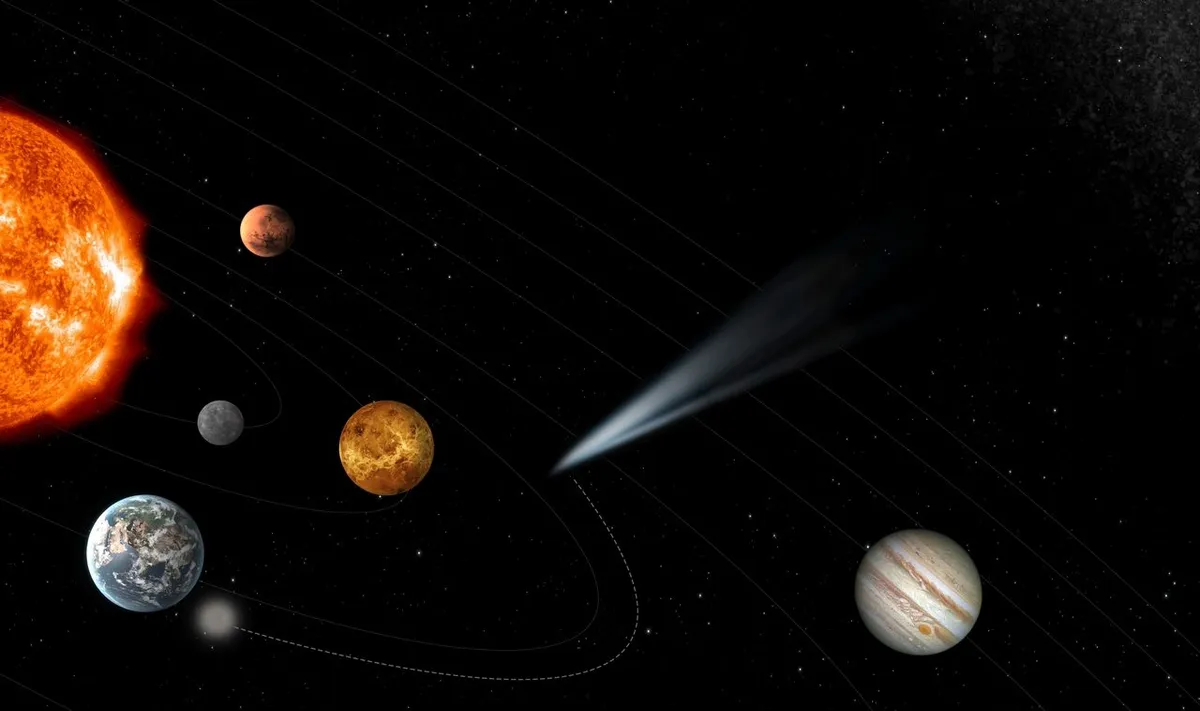What would it be like to meet an ancient comet as it enters the Solar System for the first time, observe as heat from the Sun melts its pristine ice and photograph its primordial structure? This is the aim of a new UK-led European Space Agency mission named Comet Interceptor.
Comet Interceptor has been selected by ESA as part of its Cosmic Vision programme and will see a spacecraft travel to a comet on the edge of the Solar System, fly by and capture data and images as it does so.
BBC Sky at Night Magazine spoke to Professor Geraint Jones, head of the Planetary Science Group at UCL's Mullard Space Science Laboratory and lead proposer of Comet Interceptor, to find out how the mission will operate and how the science team hope to unlock the secrets of the Solar System.

How did Comet Interceptor come about?
We submitted a first stage proposal to the European Space Agency back in October 2018 and then we found out at the end of November that we were in the final six of 23 proposals.
We had to submit a second stage longer proposal in late March 2019 and then we were invited to interview at ESTEC, ESA's European Space Research and Technology Centre in the Netherlands in early May 2019.
On 19 June 2019 we got the fantastic news that we'd been selected by ESA.
I'm co-leading the proposal with Colin Snodgrass from the University of Edinburgh but we have got a huge international team of 130 people.
We went straight into studying the mission in more detail with ESA.
Clearly from looking at the proposal, ESA had judged it to be scientifically valuable and based on what we proposed they believed it was definitely doable.
We've been having what's called a 'concurrent design facility study'.
This is where lots of engineers at ESTEC get together several times a week and work intensively on analysing the nature of the spacecraft, the mission and the instruments that will be flying on it.
What will the mission involve? I suppose 'Comet Interceptor' gives it away!
It does a bit yes! I suppose it does what it says on the tin, or whatever the spacecraft will eventually be made of!
All previous comet missions that were targeted to go to comets went to comets that have been round the Sun many times before, the most famous of which being Comet Halley of course.
We knew for centuries beforehand that it was going to come past the Sun in 1986 so there was plenty of time for space agencies to prepare missions to go to that comet.
All other dedicated comet missions have been to comets like 67P/Churyumov-Gerasimenko, which is where the Rosetta mission went.
It's a short-period comet so we know where it's going to be at any point in time.
These missions have taught us a huge amount. There was a huge breakthrough in the 1980s from Halley and one other comet that was encountered then.
Then NASA had several missions such as Stardust and Deep Impact that looked at other comets.
Most recently we had Rosetta, an ESA mission that spent a couple of years travelling alongside Comet 67P, dropping a lander down onto its surface, telling us more about what these mysterious bodies are made of and what makes them tick.

But the type of comet we haven't yet encountered with a spacecraft is one that's coming into the Solar System towards the Sun for the first time.
We really would like to see one of these close-up and study it in great detail because comets are believed to be the leftovers from the period when the planets formed.
They're as old as the Solar System. Millions upon millions of them were scattered out of the Solar System around the time that the planets were being formed into a deep freeze really far away from the Sun.
Occasionally some of them come back in, they warm for the first time in billions of years, releasing gas and dust, and we see their spectacular tails.
But the problem with encountering one of these long period comets is that we don't know when and where they're going to arrive.
The ones that are coming in for the first time - which are called 'dynamically new' comets - could come from any direction in the sky.
We don't know where they're going to come from, where they're going to cross the plane of Earth's orbit, how close they're going to get to the Sun etc.
Typically you get a year or two of forewarning when a comet's coming into the Solar System.
Maybe we'll see that these more pristine comets have got very little dust on the surface and will be more reflective. We don't know and the only way of finding out is to get closer.
More recently with the advent of ground-based survey telescopes, that distance at which new comets are being found is moving further away from the Sun, which means that we get more forewarning of when a comet is coming in.
In a couple of years time there's a really capable observatory due to go online in Chile, the Large Synoptic Survey Telescope, which is going to map the entire sky as seen from Chile every few nights.
With that facility we expect to be able to find comets really far out, giving us a lot more warning as to when these comets are coming in.
It probably won't increase the number of comets found, but it will mean that we will be finding them farther from the Sun than we normally would.
As ESA announced the call for the mission proposals, it was clear the Comet Interceptor mission, if accepted, would be launched with the ARIEL exoplanet observatory mission in 2028.
ARIEL is going to be delivered to a Lagrange point; one of the stable points in space where the Sun and Earth's gravity cancel out, so it's quite stable.
It's the point 'L2', which is on the other side of Earth from the Sun, about 1.5 million km away, so any spacecraft that's launched with ARIEL will be delivered to this gravitationally stable spot.
It's a perfect place to put a spacecraft waiting for a suitable target coming in towards the Sun.
This combination of our telescopes getting better at finding comets further away, and the opportunity to deliver a spacecraft to a position that would be ideal to wait for a suitable target is perfect for Comet Interceptor.
Once a suitable comet has been spotted, how do you get the Comet Interceptor to move towards that target?
The expectation is that once potential comets have been found, we'll track them and refine their orbits: find out exactly where their future trajectory is going to take them.
Because we're limited in mass, we have to stay close to Earth's orbital plane; the plane of the ecliptic. We can't go far north or south of it.
So we can only encounter comets when they're crossing that orbital plane.
This limits which comets we could potentially go to, but also we can't build a spacecraft that will cope with going really close to the Sun or really far away.
So it's going to be a range of distances around Earth's orbit and we need to define exactly what that range is swell.
As part of the preparations for the mission we'll be setting up a committee that will look at each potential target comet as it's found.
We'll find out what its predicted orbit is, where we would be able to encounter it and how easily we can get there.
Because these comets come from anywhere in the sky, the flyby speed can vary a lot.

If you have a comet going round the Sun in the same direction as Earth does, and if it's not highly inclined so it's close to Earth's orbital plane, then the flyby speed might be as slow as 10 or 20 kilometres per second, which is ridiculously high for us, but actually relatively slow!
But if you have a comet like Halley, which the Giotto probe encountered in 1986, orbiting the Sun in the opposite direction to Earth, the relative speeds can be very high. We could be talking 60 or 70 kilometres per second.
We have to design the Comet Interceptor spacecraft to be able to cope with a wide range of flyby speeds.
We'll have to provide dust shielding and things as well, which will add mass to the spacecraft.
So we may end up not being able to go to every single comet we'd like to; there'll probably be a range of different comet orbits that we'll be able to intersect, and that's part of the study that we've just begun.
Once it finally gets to the comet, what sort of science will it be doing and how?
Comet Interceptor will be more than one spacecraft.
Our proposal is for three spacecraft: a primary one, which for now we're calling 'Spacecraft A'.
This will be the one that carries the other two smaller spacecraft to the comet.
It will have the main power supply and it will be the spacecraft through which we will be communicating with Earth.
We're proposing that that one doesn't go too close to the comet. It will need some dust shielding but it won't go to a high-risk region, and we're thinking of that flyby distance of being around 1,000km, which is pretty close but not dangerously so.
As Spacecraft A is approaching the comet it would release two smaller sub-spacecraft: one also provided by the European Space Agency and one by the Japan Aerospace Exploration Agency JAXA.
These two probes would go closer to the nucleus, so there's a significant risk that we might lose them if they get hit by dust at high speeds, for example.
They need to be sending back their data in real time to the main spacecraft in order to save all the data we can.
They're almost expendable. If one or both of them gets destroyed, it's fine; it's part of the mission and we knew there was a significant risk.
We'd be sending the data back to the main spacecraft for safe-keeping to send back to Earth later.
In terms of instruments, we'd have a main science camera on Spacecraft A that would look at the comet's nucleus at very high resolution.
We'd also have infrared instruments mapping the comet's nucleus as well.
We want to see whether the comet's nucleus looks different to Halley or 67P and other comets we've seen so far, or considering it's coming in towards the Sun for the first time since it was formed, whether it's radically different in appearance.
Are there ices that we haven't seen on other comets, for example?
All the previous comet nuclei that we've seen are very dark because they've got thick layers of carbon-rich dust on their surfaces.
This may build up as they go past the Sun with every orbit, so maybe we'll see that these more pristine comets have got very little dust on the surface and will be more reflective.
We don't know and the only way of finding out is to get closer.

As well as those visible and infrared cameras, we've also got plasma instruments, so we'll be sensing the magnetic field around the comet, and how the solar wind is flowing past the comet.
It will also have a mass spectrometer that will sample the gas around the comet, and will give us detailed information about what exactly the gases coming off the comet are made of.
We'll have cameras on the smaller spacecraft as well. They're unlikely to be of better image quality than the camera on Spacecraft A, but by having three viewpoints, even though it's just a fast flyby, we'll be able to build up a 3D model of the nucleus.
We're also proposing a camera that's going to map the entire sky.
The reason for this is to understand how dust scatters light in the coma around the comet, and that can tell us about the shape of the dust, and look at the polar imagery.
If you put Polaroid sunglasses on, or 3D glasses that you get at the cinema, if you rotate them in daylight looking at different objects you'll see that objects look very different depending on how they scatter the light.
We plan to be making those kinds of observations as well.
With dust instruments measuring how many impacts we have on the spacecraft, we'll also learn about the comet's surface, what's coming off it, and also the 3D structure of the material around the comet.
We're packing a huge amount of science into a really small mass so it may be that not everything we've proposed will be able to fly, but we're confident at the moment that we will be able to do fantastic science with this mission.
Was a putting a lander on the surface of the comet ever a possibility?
Unfortunately not, no. To land, we'd have to slow down. Even at one of the slower flyby speeds of 10 or 20 kilometres per second, that would mean a lot of fuel.
And even if we were to do that, there would be a problem with communicating with the lander as well, because the flyby spacecraft would have whizzed past.
There's a lot to be said for actually going down onto the surface of the nucleus, as we saw with Rosetta's Philae lander. Even though it only operated for a couple of days we learnt a lot from it.
But with Comet Interceptor, the flyby speeds are going to be way too high, so that's for another mission in a few decades' time I think!
With Rosetta we received amazing images of plumes bursting through the surface of the comet. Can we expect the same from Comet Interceptor?
A lot of that will be decided by how active the comet itself is.
If we're very lucky, then we might get something on the scale of Hale Bopp, which was a huge comet that those of us who were around in 1997 will remember was spectacular and you could see it in the sky for weeks on end.
Those kinds of spectacular comets are rare, and it's more reasonable to expect something of modest activity level, but even the Rosetta comet was a fairly low level production rate comet.
It's not particularly active and yet we saw these amazing dust jets coming off, so the expectation is that yes, for most targets that we see as being possible at the moment we should be able to see dust jets coming off the surface as well.
And we're aiming for as high a resolution at the nucleus as possible with the primary science camera, so we're hoping for image resolution of better than 10 metres at least.
That will definitely give us a sense of what the shape at the surface is like, how it's changed at huge distances from the Sun over billions of years.
That's ultimately the main question of the mission, isn't it? How the Solar System formed and how it evolved?
Exactly, yes. We have learnt a huge amount from previous comet missions, but we haven't seen a pristine comet like this before.
It's the best time capsule we have from the early Solar System, at least the bits that were far enough from the Sun that ices such as water ice, carbon dioxide, carbon monoxide etc. could form solids.
It will be extremely valuable to be able to make these measurements.
Follow Comet Interceptor on Twitter at @CometIntercept or via the mission's dedicated website.
